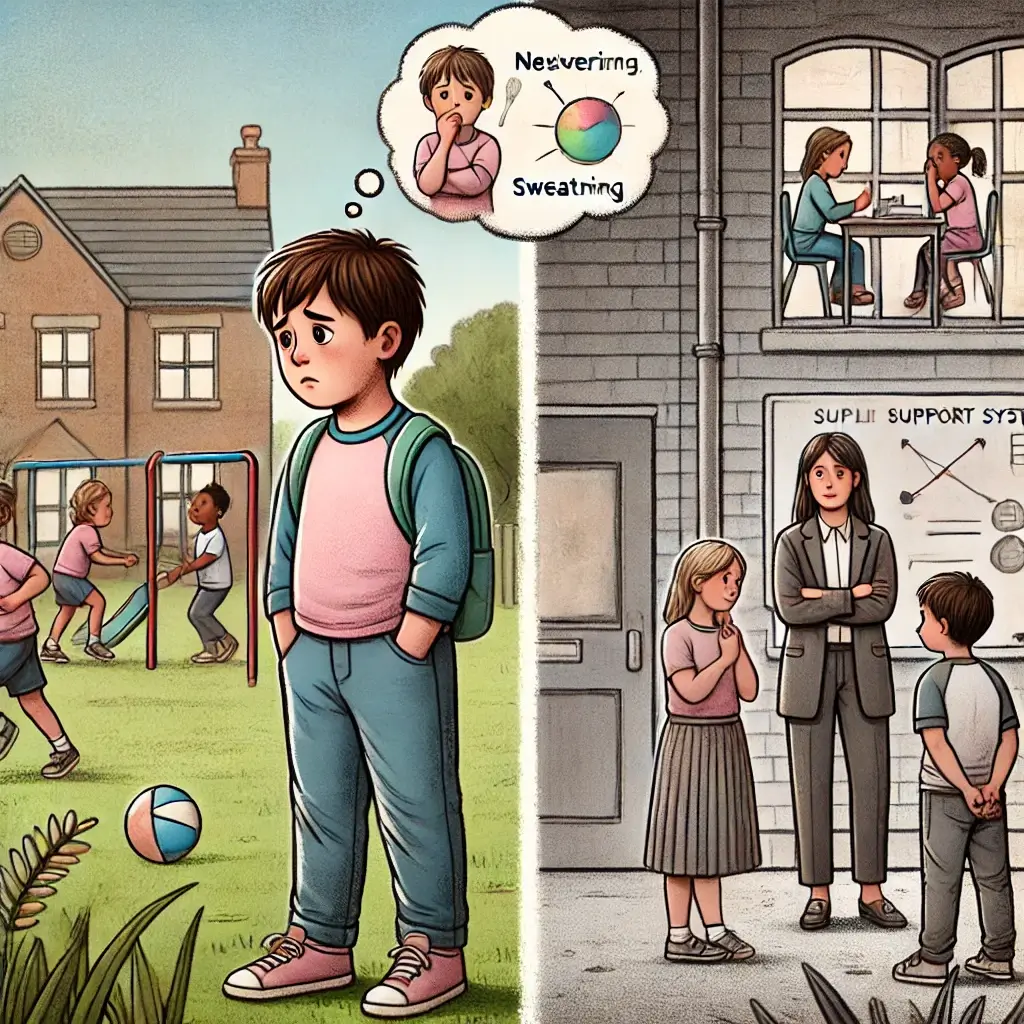Introduction to Social Development and Anxiety
The elementary school years are foundational for social and emotional development, as children begin to establish their social identities and navigate peer relationships. For some children, however, social interactions are fraught with hesitation or avoidance. While shyness is often perceived as a benign personality trait, social anxiety disorder (SAD) represents a more serious condition that disrupts daily life and can hinder academic, emotional, and social growth.
Expert Perspective on Shyness vs Social Anxiety
Dr. Michael Chen, a pediatric psychologist, explains, “Shyness may cause children to hesitate or feel uneasy in new environments, but it generally subsides with time and exposure. Social anxiety disorder leads to persistent fears and avoidance that interfere with normal functioning.” Approximately 7% of elementary-aged children experience SAD, compared to the 40% of children identified as shy (National Institute of Mental Health, 2024).
Research Significance and Implementation
A study published in the Journal of Anxiety Disorders (2024) underscores the importance of understanding these differences, as early intervention in children with SAD can significantly improve outcomes. This article provides insights into the latest research, practical strategies for parents and educators, and professional interventions to support children grappling with social anxiety.
Recent Research Findings
Recent findings highlight critical differences between shyness and social anxiety, demonstrating that while the two may appear similar, their impacts and trajectories differ significantly.
Longitudinal Study Results
A 2024 longitudinal study in the Journal of Anxiety Disorders followed 3,000 elementary students over four years to observe the progression of shyness and its potential transition into SAD. Key findings include:
42% of shy children did not develop SAD, emphasizing that shyness does not always predict future anxiety disorders.
15% of children diagnosed with SAD showed no signs of shyness early in life, suggesting the disorder can emerge independently of temperament.
Environmental factors, including family dynamics and school culture, influenced the progression from shyness to SAD in 23% of cases.
Clinical Distinctions
The American Academy of Child and Adolescent Psychiatry (AACAP) provides clear criteria to distinguish between the two conditions:
Shyness: Characterized by discomfort in new situations, it typically resolves with familiarity. It does not cause significant distress or avoidance of activities.
Social Anxiety Disorder: Marked by severe fear of social judgment and persistent anxiety in familiar settings. Symptoms often include physical manifestations such as sweating, trembling, and stomachaches, coupled with rigid avoidance of social situations (AACAP, 2024).
Treatment Efficacy
Another significant study in the Journal of Child Psychology (2024) found that early intervention through cognitive-behavioral therapy (CBT) reduced symptoms of SAD by up to 65% within a year. This reinforces the importance of timely identification and targeted support.
Support Framework
Addressing SAD requires a multifaceted approach that combines home, school, and professional interventions. Below are evidence-based strategies:
Home-Based Support Strategies
Gradual Exposure: Introduce social activities incrementally, starting with low-pressure environments such as playdates with one or two peers.
Role-Playing Scenarios: Practice common social interactions, like speaking to a teacher or introducing oneself to new classmates.
Encourage Coping Mechanisms: Teach relaxation techniques and anxiety management strategies, such as deep breathing or progressive muscle relaxation, to help manage anxiety symptoms.
Educational Environment Interventions
Collaborate with Educators: Work with teachers to develop accommodations, such as providing alternative participation methods and creating safe spaces for breaks.
Promote Social Skills: Encourage participation in structured group activities like art or sports, where the focus is on a shared goal rather than individual performance.
Peer Support Programs: Pair children with socially confident peers through buddy systems, fostering mentorship and encouragement.
Professional Treatment Options
Therapeutic Interventions: Cognitive-behavioral therapy is the gold standard for treating SAD. It focuses on reframing negative thought patterns and building practical social skills.
Group Social Skills Training: These programs allow children to practice interactions in a supportive environment, reducing fear through repeated exposure.
Medication Options: In severe cases, short-term use of anti-anxiety medications may be considered under medical supervision.
Technology Integration
Modern tools can play a supportive role in managing SAD. Apps designed to track anxiety levels and provide guided mindfulness exercises can complement traditional interventions. For example, parents can use anxiety-tracking apps to monitor their child’s progress and identify triggers, enabling a more targeted approach to treatment.
Final Thoughts
Understanding the differences between shyness and social anxiety disorder is critical for addressing the unique challenges faced by socially anxious children. With the right combination of home-based strategies, school accommodations, and professional interventions, children with SAD can overcome their fears and thrive socially and academically.
Expert Conclusion
As Dr. Chen emphasizes, “By bridging the gap between knowledge and action, parents and educators can make a significant difference in a child’s life, fostering confidence and resilience that lasts well into adulthood.” With awareness, compassion, and evidence-based support, we can help every child unlock their full potential.
References
American Academy of Child and Adolescent Psychiatry Guidelines (2024).
Chen, M. (2024). Pediatric psychology insights on anxiety.
Journal of Anxiety Disorders (2024). Longitudinal study on shyness and social anxiety.
Journal of Child Psychology (2024). Cognitive-behavioral therapy outcomes in children with SAD.
National Institute of Mental Health (2024). Statistics on social anxiety in children.

Dominic E. is a passionate filmmaker navigating the exciting intersection of art and science. By day, he delves into the complexities of the human body as a full-time medical writer, meticulously translating intricate medical concepts into accessible and engaging narratives. By night, he explores the boundless realm of cinematic storytelling, crafting narratives that evoke emotion and challenge perspectives. Film Student and Full-time Medical Writer for ContentVendor.com


